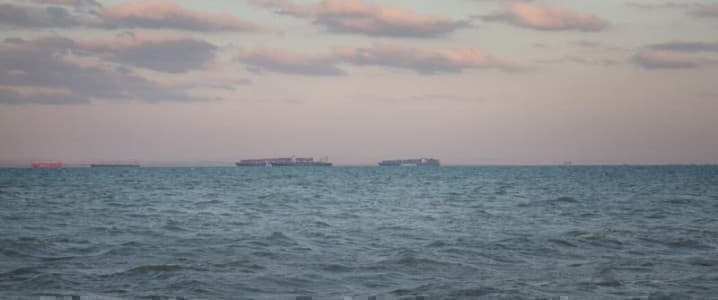Cyril Widdershoven
Dr. Cyril Widdershoven is a long-time observer of the global energy market. Presently he works as a Senior Researcher at Hill Tower Resource Advisors. Next…
More Info
By Cyril Widdershoven – Apr 17, 2024, 5:00 PM CDT
While the whole world is watching the Arabian/Persian Gulf arena at present, amid lingering fears of an imminent Israeli attack on Iran, a new crisis could be unfolding. According to statements from the Iranian news site Tasnim, which is semi-governmental but linked to the IRGC, Iran’s navy is reportedly heading toward the Red Sea to protect Iranian commercial vessels navigating the already highly contested area. The deployment of additional Iranian navy vessels into the Red Sea, bordering not only Egypt, Saudi Arabia, or Sudan but also of vital importance to Israel and Jordan, could be interpreted as an expansion of the Iran-Israel confrontation. Tehran has shown no signs of backing down, indicating its commitment to a full-scale confrontation with Israel, possibly anticipating that the Biden administration and EU powers will restrain Israel from retaliating against Iran’s recent missile and drone attack over the weekend. The hours ahead may determine a possible Israeli military response, with the country’s War Cabinet expected to discuss potential actions. Tehran has officially warned Israel that any direct attack on Iranian targets will be met with full force, threatening to obliterate the Jewish State.
Related: Hedge Funds Dump U.S. Energy Stocks to Buy Crude Options
The decision to deploy Iranian navy vessels to the Red Sea, without opting for de-escalation, will not only be observed by Israel and the USA but also by Arab countries such as Saudi Arabia and Egypt as a concerning escalation. Iran has also signaled the presence of its Jamaran frigate in the Gulf of Aden. The IRGC anticipates a full-scale Israeli response, particularly after the recent seizure of the MSC Aries, a Portuguese-flagged container ship, on April 13th, which Tehran claims is linked to Israel. The IRGC has shown no signs of relenting from its escalatory actions against vessels perceived to be linked to Israel. In recent days, the IRGC has increased its support for the Yemeni Houthi movement, leading to heightened activities in the Red Sea arena.
Iran not only wields influence over the Houthis but also demonstrates a willingness to escalate tensions in the Red Sea. Adding to the complexity is the presence of a major asset, the Behshad, believed by Western intelligence to be a spy ship operated by the IRGC. Following this weekend’s events, the Behshad is now a primary target for the Israeli IDF, with previous assessments by US navy forces in February considering action against the IRGC spy ship. Despite this, Washington has refrained from direct action against Iranian assets. However, this stance could dramatically change, as the Behshad provides direct IRGC intelligence to the Houthis. The Behshad, built in 1999 as a cargo ship, gained wider attention in 2021 when it replaced another vessel, the Saviz, in the Red Sea. The Iranian Navy has maintained a presence in the Red Sea for years, with reports suggesting the presence of two other Iranian navy ships, the IRIS Alborz and IRIS Bushehr, in the region. The Alvand-class destroyer, part of the Iranian navy’s 34th fleet, alongside the Bushehr support vessel, patrolled the Gulf of Aden, the north of the Indian Ocean, and the Bab Al-Mandab Strait as far back as 2015, according to Iran’s Press TV. It has now reentered the Red Sea.
For Israel, and potentially its Western backers and supporting Arab states, launching a full-scale reprisal in the Red Sea could be a more feasible option than attacking the Iranian heartland or risking escalation in the Arabian/Persian Gulf. Iran’s capabilities in the Red Sea are limited, while Israel and the US maintain significant naval presence, indirectly supported by major European naval assets in the area. Some may even view it as a win-win situation, as removing Iranian assets from the Red Sea–Gulf of Aden region, coupled with military action against the Houthis, could alleviate maritime traffic constraints over time. Egypt, Jordan, and Saudi Arabia, though not expected to participate directly, may tacitly endorse such actions, considering their own security and economic interests.
By Cyril Widdershoven for Oilprice.com
More Top Reads From Oilprice.com:
Should We Keep Investing in Oil and Gas? Experts Weigh In Oil Moves Down on Crude Inventory Build Uranium Stocks Poised for Breakout As Nuclear Resurgence Gains Momentum
Join the discussion | Back to homepage
Cyril Widdershoven
Dr. Cyril Widdershoven is a long-time observer of the global energy market. Presently he works as a Senior Researcher at Hill Tower Resource Advisors. Next…
More Info
Related posts
Leave a comment
